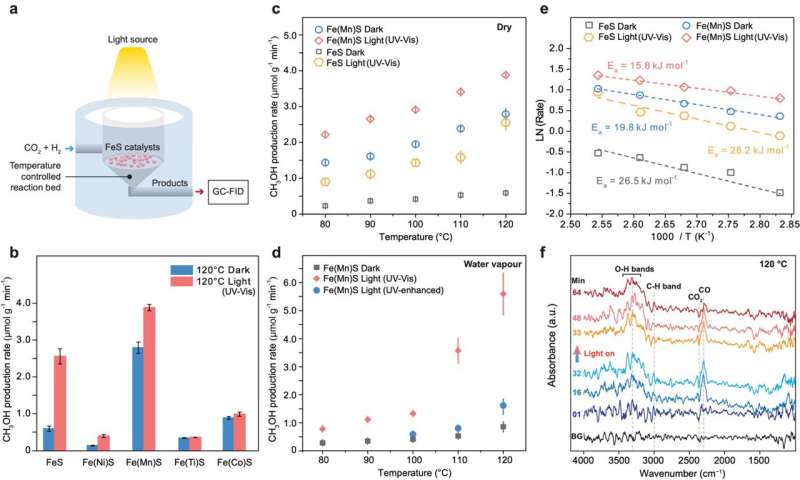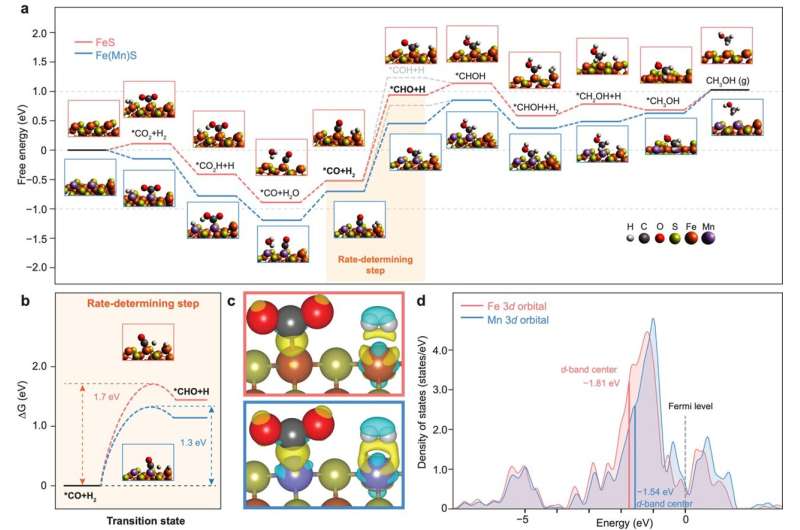An international team of scientists has published a study highlighting the potential role of iron sulfides in the formation of life in early Earth’s terrestrial hot springs. According to the researchers, the sulfides may have catalyzed the reduction of gaseous carbon dioxide into prebiotic organic molecules via nonenzymatic pathways.
This work, appearing in Nature Communications, offers new insights into Earth’s early carbon cycles and prebiotic chemical reactions, underscoring the significance of iron sulfides in supporting the terrestrial hot springs origin of life hypothesis.
The study was conducted by Dr. Nan Jingbo from the Nanjing Institute of Geology and Paleontology, Chinese Academy of Sciences; Dr. Luo Shunqin from Japan’s National Institute for Materials Science; Dr. Quoc Phuong Tran from the University of New South Wales, Australia, and other researchers.
Iron sulfides, abundant in early Earth’s hydrothermal systems, may have facilitated essential prebiotic chemical reactions, similar to the function of cofactors in modern metabolic systems. Previous studies on iron sulfides and the origin of life have focused primarily on deep-sea alkaline hydrothermal vents, which provide favorable conditions like high temperature, pressure, pH gradients, and hydrogen (H2) from serpentinization—factors thought to support prebiotic carbon fixation.

However, some scientists have proposed terrestrial hot springs as another plausible setting for life’s origins, due to their rich mineral content, diverse chemicals, and abundant sunlight.
To explore the role of iron sulfides in terrestrial prebiotic carbon fixation, the research team synthesized a series of nanoscale iron sulfides from mackinawite, including pure iron sulfide and iron sulfides doped with common hot spring elements such as manganese, nickel, titanium, and cobalt.
Their experiments showed that these iron sulfides could catalyze the H2-driven reduction of CO2 at specific temperatures (80–120 °C) and atmospheric pressure. Gas chromatography was used to quantify methanol production.
The study found that manganese-doped iron sulfides exhibited notably high catalytic activity at 120 °C. This activity was further enhanced by UV-visible (300–720 nm) and UV-enhanced (200–600 nm) light, suggesting that sunlight might play a role in driving this reaction by facilitating chemical processes. Additionally, the introduction of water vapor boosted catalytic activity, further supporting that vapor-laden terrestrial hot springs may have served as key sites for nonenzymatic organic synthesis on early Earth.

To further investigate the mechanism behind the H2-driven CO2 reduction, the team conducted in-situ analyses using diffuse reflectance infrared Fourier transform spectroscopy (DRIFTS).
Results indicated that the reaction likely proceeds via the reverse water-gas shift (RWGS) pathway, in which CO2 is first reduced to carbon monoxide (CO), which is subsequently hydrogenated to form methanol.
Density functional theory (DFT) calculations provided additional insights, revealing that manganese doping not only lowered the reaction’s activation energy but also introduced highly efficient electron transfer sites, thereby enhancing reaction efficiency. The redox characteristics of iron sulfides make them functionally analogous to modern metabolic enzymes, providing a chemical foundation for prebiotic carbon fixation.
This research underscores the potential of iron sulfides to catalyze prebiotic carbon fixation in early Earth’s terrestrial hot springs, opening new directions for exploring life’s origins and supporting efforts to search for extraterrestrial life.
More information:
Iron sulfide-catalyzed gaseous CO2 reduction and prebiotic carbon fixation in terrestrial hot springs, Nature Communications (2024). DOI: 10.1038/s41467-024-54062-y
Citation:
Scientists reveal possible role of iron sulfides in creating life in terrestrial hot springs (2024, November 28)
retrieved 28 November 2024
from https://phys.org/news/2024-11-scientists-reveal-role-iron-sulfides.html
This document is subject to copyright. Apart from any fair dealing for the purpose of private study or research, no
part may be reproduced without the written permission. The content is provided for information purposes only.

